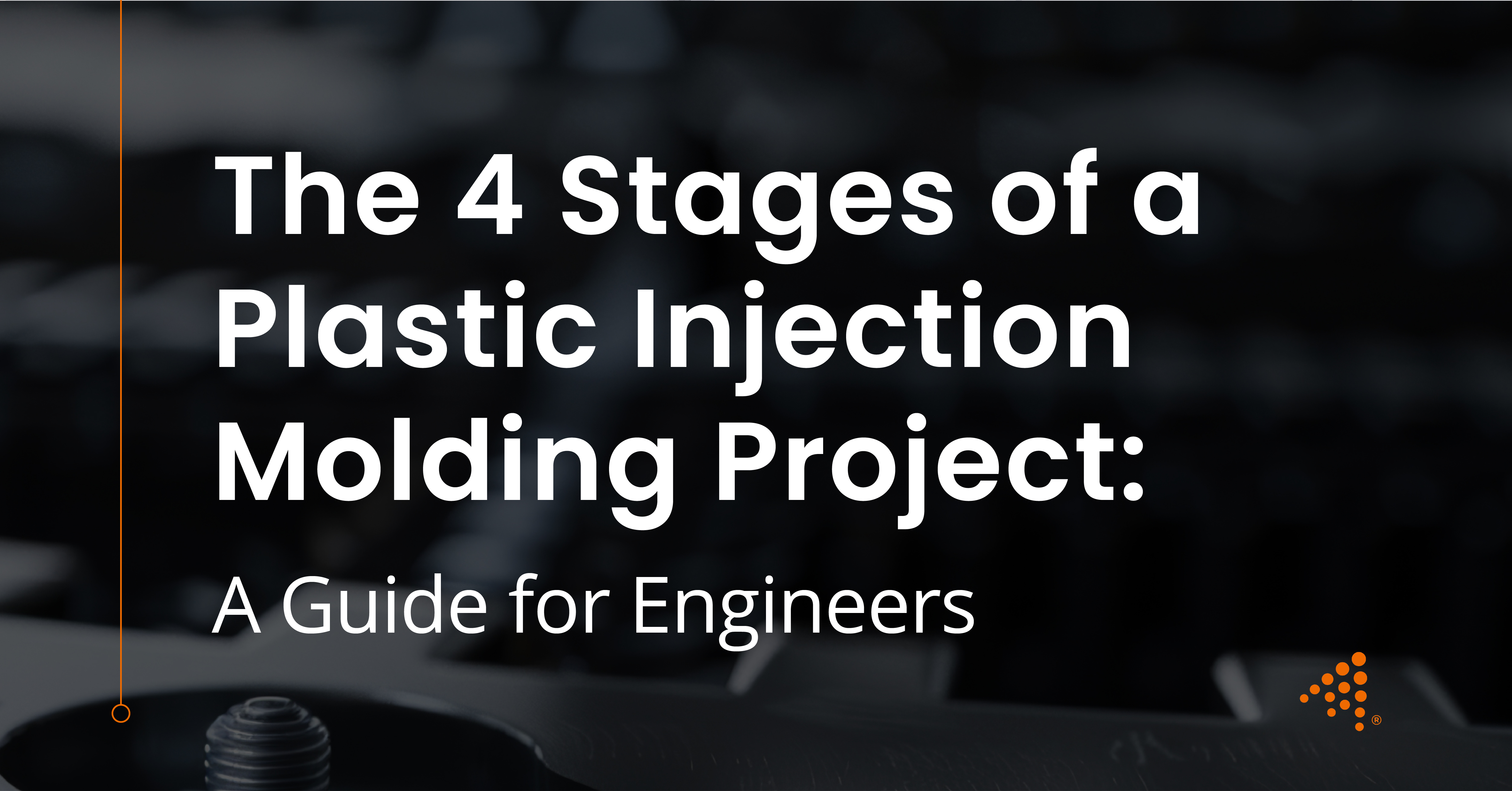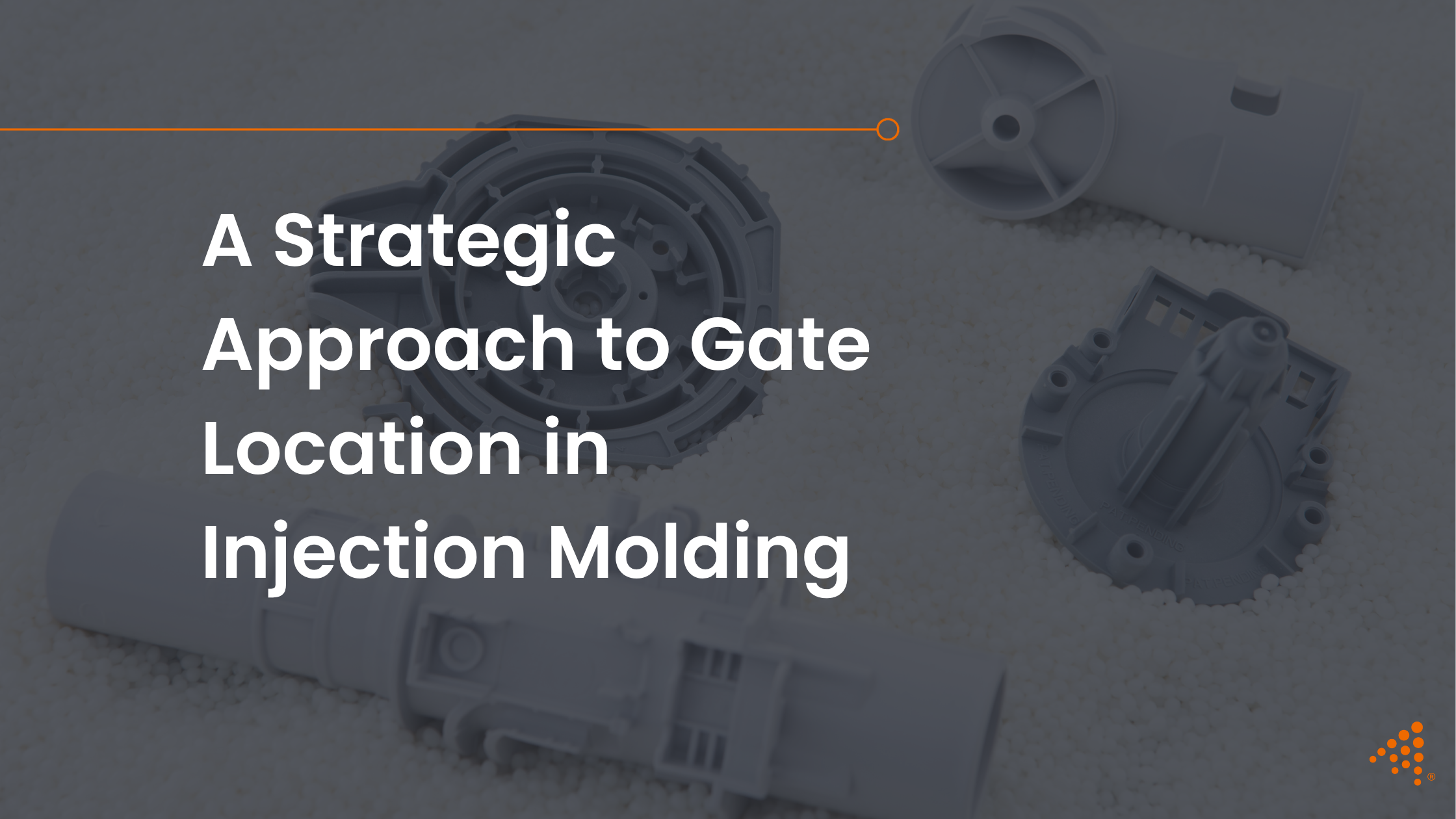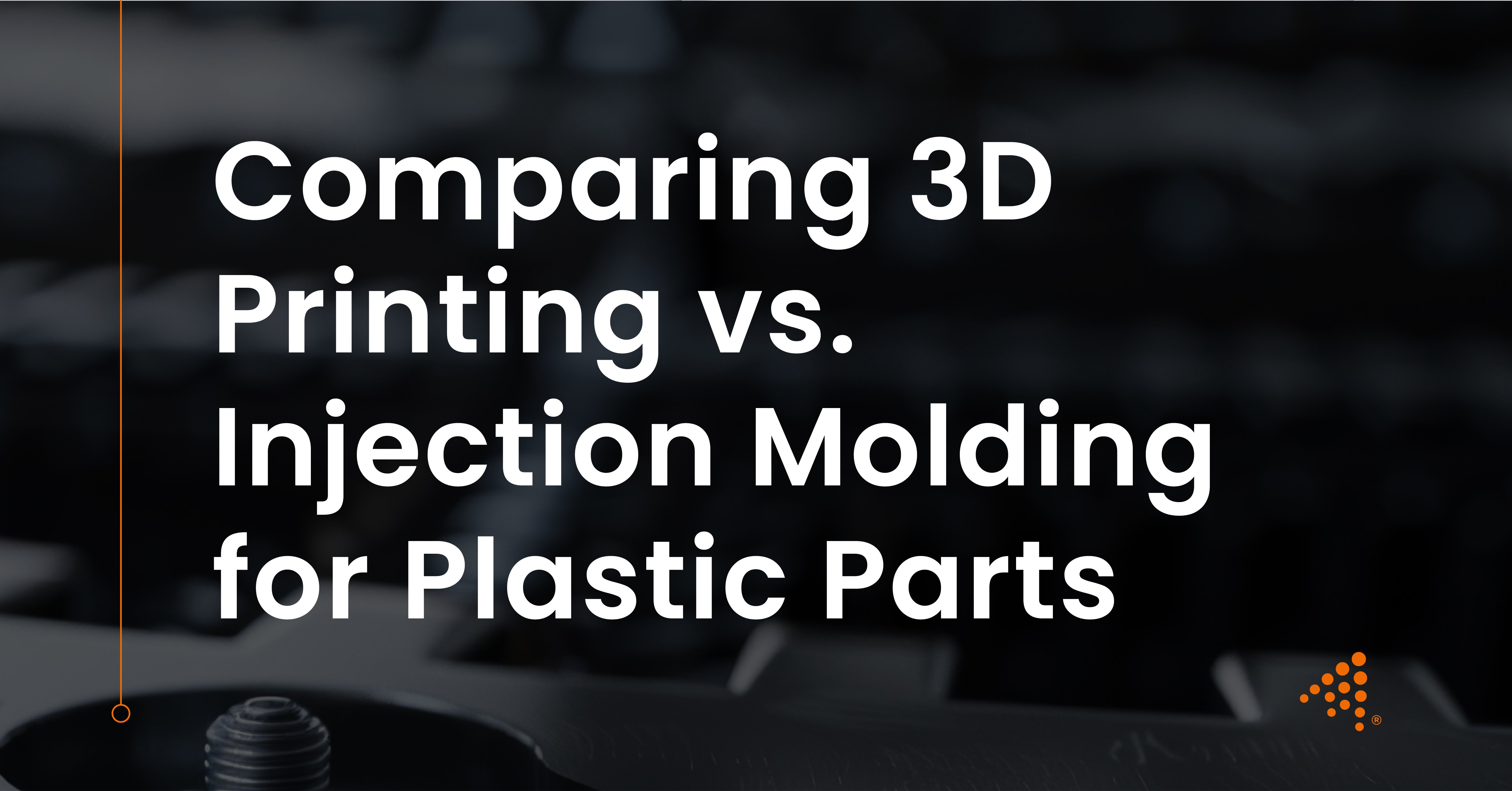The Essential Role of Injection Molding in Mass Production
In today's competitive market, efficient manufacturing methods are crucial for maintaining a commercial edge. Injection molding stands out as a vital...
4 min read
Nick Erickson : Aug 7, 2025 3:04:00 PM

Plastic injection molding is one of the most widely used manufacturing processes for producing plastic parts, valued for its efficiency, scalability, and ability to create complex shapes with high precision. This method is ideal for the mass production of parts with tight tolerances and intricate details, making it a preferred choice for demanding industries ranging from consumer electronics to medical devices and aerospace.
For engineers and product designers, understanding the complete project lifecycle is fundamental to navigating the complexities of bringing a product from a digital concept to a physical, market-ready component. A successful project moves through four distinct phases, each building on the last to deliver a high-quality, cost-effective final product.
A well-managed injection molding project is a systematic progression. It ensures that critical details are addressed at the right time, minimizing costly errors and delays. The process can be broken down into four key stages:
Read More About DFM in Injection Molding: Cut Costs, Improve Quality
This foundational phase is where a concept begins its transformation into a manufacturable product. It starts with the initial part design, which is then meticulously refined through a process called Design for Manufacturability (DFM). DFM is an engineering practice of designing products in a way that makes them easy and cost-effective to manufacture. For injection molding, this involves a detailed analysis of features like wall thickness, draft angles, ribs, and bosses.
Consistent wall thickness is a primary goal, as it helps prevent defects such as warping and sink marks caused by uneven cooling. Draft angles, which are slight tapers applied to the vertical walls of the part, are incorporated to facilitate smooth ejection from the mold. The placement and geometry of features like ribs for structural support or bosses for fastening points are also optimized to balance strength with moldability.
Concurrent with design refinement is material selection. With thousands of polymers available, this choice profoundly impacts the part's mechanical properties, chemical resistance, durability, and cost. For medical devices, material selection is even more rigorous, often requiring polymers that meet specific biocompatibility standards (like ISO 10993) and can withstand sterilization methods such as gamma irradiation, ethylene oxide (EtO), or autoclaving. Common medical-grade thermoplastics include Polycarbonate (PC), Polypropylene (PP), PEEK, and medical-grade Acrylonitrile Butadiene Styrene (ABS). The chosen material also influences the mold design, tooling wear, and cycle times.
Once the part design and material are finalized, the project moves into the mold design and manufacturing stage. This is a highly technical process where the finalized 3D part model is used to create the inverse, a precision mold (tool). This step demands close collaboration with a trusted tooling and manufacturing partner to translate the design into a robust and efficient production tool.
The process begins with creating a detailed CAD model of the mold itself. Advanced software, including mold flow simulation, is often used to predict how the molten plastic will flow into and fill the cavity. This analysis helps engineers foresee and mitigate potential issues like weld lines, air traps, or short shots (incomplete parts) before any steel is cut.
With a validated mold design, manufacturing begins. Molds are typically machined from durable tool steels using high-precision equipment like Computer Numerical Control (CNC) machines and Electrical Discharge Machining (EDM). The choice of steel and the complexity of the mold depend on the expected production volume, part complexity, and the type of plastic being molded. The objective is to build a tool that can produce consistent parts for tens of thousands or even millions of cycles while minimizing cycle times and preventing defects.
With the physical mold complete, it must be thoroughly tested and validated. This phase confirms that the mold, material, and molding process work together to produce parts that meet all specifications. The first step is typically a First Article Inspection (FAI) run, where an initial batch of test parts is produced. These parts are meticulously inspected for dimensional accuracy against the print, cosmetic quality, and functional performance.
Any discrepancies identified during the FAI, such as flow problems, warping, or surface blemishes, are systematically addressed by modifying the mold or adjusting the molding process parameters. For projects in regulated industries like medical devices, this phase includes a formal, three-stage Process Validation.
Aprios provides injection molding quality control and ISO-certified manufacturing protocols for full compliance and consistency.
After successful validation and qualification, the project transitions to full-scale manufacturing. The molding process, now locked in with a validated set of parameters, is monitored to maintain efficiency and part-to-part consistency. Robust quality assurance systems are essential, especially in medical manufacturing. This often includes Statistical Process Control (SPC) to monitor key process outputs and automated in-line inspection systems to check dimensions.
For medical and other high-tech components, production may occur in a certified cleanroom environment to prevent contamination. Rigorous quality control checks are performed at regular intervals throughout the production run to maintain part quality and performance standards. This final phase focuses on producing parts in the required quantities, managing costs, and meeting delivery timelines. Continuous process monitoring and a strong quality management system allow the manufacturing team to address any potential deviations immediately, supporting smooth and uninterrupted production.
At Aprios, we’re more than an injection molding company—we’re your custom manufacturing partner. From Insert Molding for Medical Devices and Overmolding Services to 3D Printed Prototypes, we combine decades of experience with advanced design for manufacturing solutions to meet your project’s exact requirements.
Our team works with engineers to navigate the complexities of DFM services, additive manufacturing services, and secondary manufacturing processes to bring your vision to life.
Whether you're building medical device prototypes or launching high-volume production, Aprios ensures your project is delivered with precision, speed, and quality.
Injection molding offers unmatched precision, repeatability, and scalability in part production. By understanding the key phases of a project and partnering with a team experienced in plastic injection molding services, you can deliver high-quality parts efficiently.
If you’re ready to take the next step in your injection molding project, contact Aprios today to discuss how we can support your needs.
You can also view our Material Selection tool.

In today's competitive market, efficient manufacturing methods are crucial for maintaining a commercial edge. Injection molding stands out as a vital...

The journey from a plastic pellet to a finished, high-precision component is a marvel of controlled chaos. At the heart of this transformation is the...

3D printing and injection molding are two of the most common manufacturing processes used to produce plastic parts. While each method has distinct...